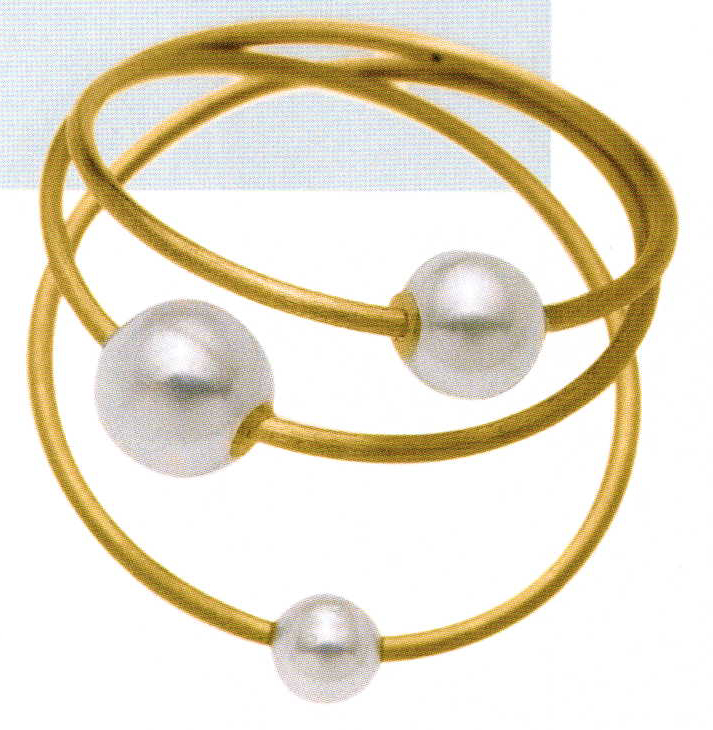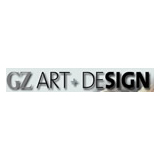Polytechnic College: a Source of Diversity and Innovation
6 Minute Read
There is an internationally renowned education center for jewelry designers right in the middle of the live Rhine metropolis: the Polytechnic College and its course in product design. Located in the tense field between art and design, unique and series jewelry and products, students of this course are challenged to define their own focus.
Düsseldorf is an equally lively and important German media, fashion and trade fair city. The Art Academy, large museums and numerous galleries - including quite a few for contemporary jewelry - offer an ideal environment for design students. The building of the Dusseldorf Polytechnic College is located not far from the city center and just a few steps away from the expansive Rhine Park. The Faculty of Design here teaches both communication and product design.
Jewelry designers have been educated in Düsseldorf since 1947. When the polytechnic college was founded in 1971, the subjects of jewelry and enamel at the Crafts School were incorporated in the design faculty under the versatile enamel artist Prof. Sigrid Delius and the jewelry kineticist, Prof. Friedrich Becker, then combined in the course in product design. A team of three different personalities has since emerged in Prof. Elisabeth Holder, Prof. Hermann Hermsen and Dipl.-Des. Herbert Schulze. This lends the course its current variety. Interdisciplinary study goals are the independent development of design positions and the critical appraisal of social phenomena and market strategies.
Three personalities, three starting points
Elisabeth Holder focuses on unique jewelry. Her teaching deals mainly with free artistic expression. She feels that connections to other art forms are free-flowing, and the professor believes sensitive and conscious handling of materials is important when experimenting. Critical appraisal of each topic is based on personal experience. The working process consists of a repetitive cycle of impressions, that are made sensually tactile, and objective observations. Her courses are generally structured as dynamic group work.
Hermann Hermsen from Holland focuses on series jewelry and product design. He sees the development of form as an elementary task without neglecting questions of technical product requirements or the market situation. Hermsen does not believe that artistic standards and series production are mutually exclusive. He teaches his students that the creativeness is found in the design, whereas production can be delegated. His courses cover a wide spectrum of topics beyond simple jewelry design: Under his guidance, the students develop watches, spectacles, bags, accessories and objects of everyday use such as lamps or letter openers.
The designer Herbert Schulze deals with the field of ecclesiastic and secular objects. This does not simply focus on individual pieces made using silversmith techniques, but also on topics related to product and object design. For example, in cooperation with the Faculty of Mechanical Engineering, door buzzers were developed making use of the rapid prototyping method. The vitality of his courses is mirrored among other things in the inclusion of work in the exhibition "Loffel" - an initiative by the Gallery RA in Amsterdam, repeated participation in the Grassi Fair in Leipzig and the Silver Triennale as well as participation in various design competitions for liturgical equipment.
Regular workshops and external jewelry designers as guest speakers round off the course of studies. They include familiar figures such as Helen Aitken-Kuhnen, Alexandra Bahlmann, Johanna Dahm, Georg Dobler, Birgit Laken, Jacqueline Mina, Ted Noten and Brigitte Tendahl. The used variety of materials reflects the wide range of technical equipment in the workshops. In addition to seminar space and workshops, students can also work in a silversmith smithy, an enamel workshop, a workshop with furnaces for ceramics and glass, a foundry and an extremely well-equipped machine room.
Practical experience
Participation in competitions and prizes and networking with companies are elementary parts of the comparatively small but extremely vital course of studies. This practical approach has frequently resulted in companies organizing the competitions including the competition pieces in their own production. The students acquire practical experience with galleries in the numerous exhibitions that are part of the course. They organize their own concepts independently, select the works and carry responsibility for organization and assembly. For example, the exhibition "12+3" in Gallery Raben in Vorden in Holland, which featured current work by teachers and students, was organized in this way. "Aspekte in Serie", "Nearly famous" and "26+4" are touring exhibitions with student work that have been shown in many galleries around the world over the last few years. Interesting design publications have been created for these exhibitions in cooperation with the neighboring course in communication design. The extensive catalogue book "nicht ohne", which accompanied and complemented the exhibition of the same name, is also an interdisciplinary co-production. It was on show in leading museums of applied art, such as the Grassi Museum in Leipzig or the Kestner Museum in Hanover. The documentation, which was published in 2002, reflects the work in the course of studies over the last 10 years.
Success through initiative
The student forum "inpetto" was founded four years ago in order to prepare the graduates for professional self-employment. As a non-profit organization, it enables the students to include their designs in the inpetto collection and to structure it according to their own wishes. It is inpettos philosophy to preserve the authenticity of design in its translation to series jewelry and to bridge the interface between the creative world of the designer and that of the marketplace.
Inpetto will exhibit for the fourth time in a row during the lnhorgenta in Munich in February 2004 and for the first time at the Passione 2004 trade fair in Frankfurt am Main in March. Inpetto also successfully offers design services and develops concepts through to the prototype stage. The innovative results of the cooperation with the firm M&M Uhren GmbH/Alfex Switzerland and the firm Schmuckwerk have been included in each firm's collection. The project with the firm Leser-Schmuckverpackungen is also promising. In February the company will make a selection of prototypes developed in the current semester. The young students will then be given the opportunity to develop these prototypes to production maturity in a practical semester in the firm. Motivating factors for the students in this process include not only the remuneration of their design output, but also the promise of seeing their own design appear on the market.
Course in product design:
www.brxnd.de/web/index.php?fhs
by Christiane Schorm
You assume all responsibility and risk for the use of the safety resources available on or through this web page. The International Gem Society LLC does not assume any liability for the materials, information and opinions provided on, or available through, this web page. No advice or information provided by this website shall create any warranty. Reliance on such advice, information or the content of this web page is solely at your own risk, including without limitation any safety guidelines, resources or precautions, or any other information related to safety that may be available on or through this web page. The International Gem Society LLC disclaims any liability for injury, death or damages resulting from the use thereof.
The All-In-One Jewelry Making Solution At Your Fingertips
When you join the Ganoksin community, you get the tools you need to take your work to the next level.
Trusted Jewelry Making Information & Techniques
Sign up to receive the latest articles, techniques, and inspirations with our free newsletter.



